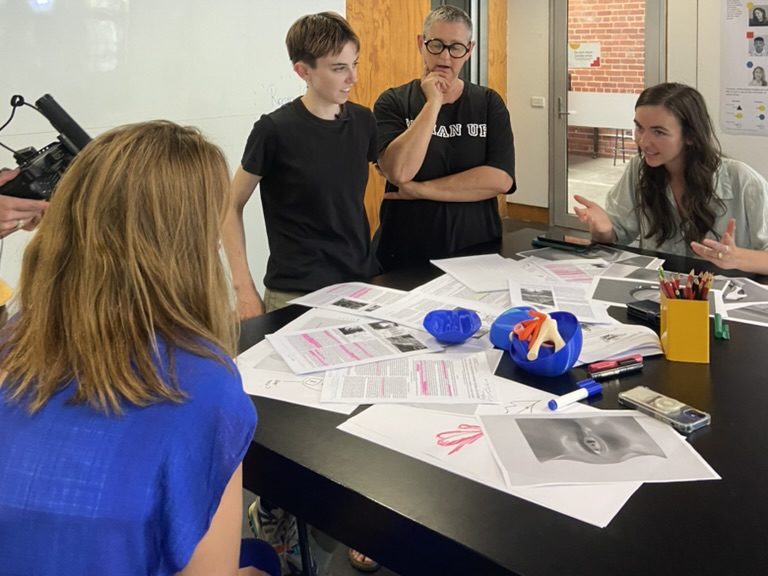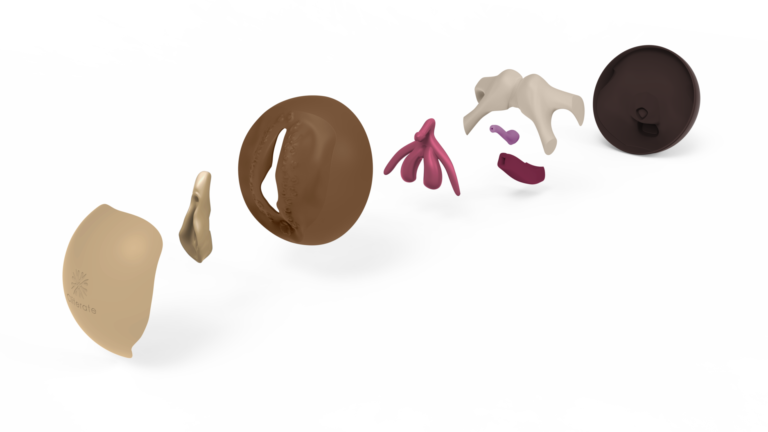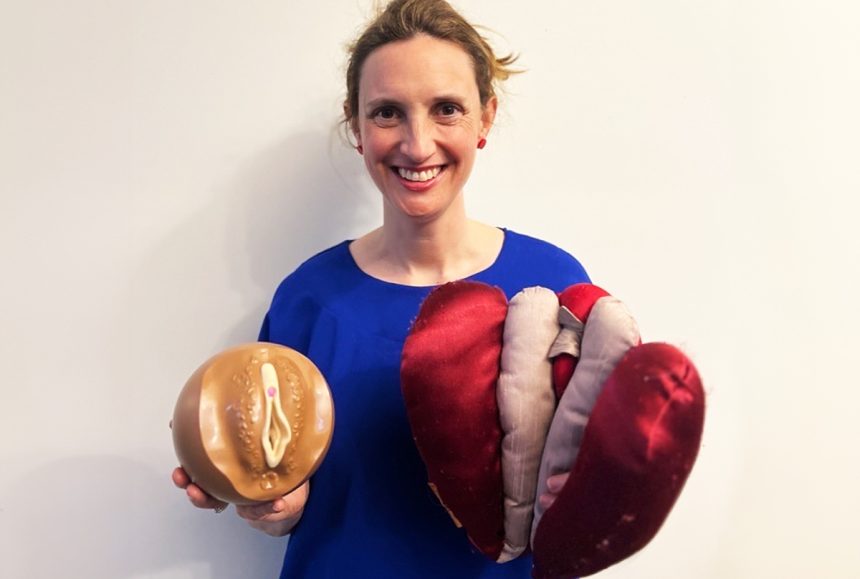Researchers have developed an interactive model vulva that can be used to deliver accessible sex education in schools and clinics across Australia.
The Cliterate is an educational tool for healthcare professionals and educators that can be pulled apart to more accurately show the relationship between the vulva, clitoris, and pelvis.

The design brief
It was created by occupational therapist Anita Brown-Major in collaboration with a design team from RMIT University, including lead designer and RMIT Senior Lecturer Dr Judith Glover, RMIT Industrial Design graduates Charlie Richardson and Cara Jordan-Miller – and, according to Dr Glover, “a brains trust of female health professionals in sexual health fields around the world called the ‘International Cliterati’.”
“The goal was to develop an anatomically correct teaching model of the parts of the female body that relate to sexual functioning,” Dr Glover told The Bursar.
“Part of that brief was also to design something that was intuitive and easy to use and understand. There are existing anatomy models of the lower part of the female body, but they have too many distractions – muscle, nerves, organs, etc. We wanted to simplify the model to the parts that we thought really mattered.”
The design challenge
For educators, Cliterate addresses a distinct lack of accessible and accurate educational resources available for the vulva. Ms Brown-Major spotted a gap in the market when she found herself using puppets of the vulva to teach her clients about their genitals. The puppets did the job, but they weren’t anatomically correct – so she created Cliterate.

“As an occupational therapist working in the sex education area, I didn’t have any resources that were easily able to explain body anatomy,” Ms Brown-Major says.
“As a parent of three daughters, I also didn’t have the tools personally to answer the questions “which hole does the blood come from, is it the same as my pee?
“There has been published medical literature regarding Cliterate anatomy, but the translation of this medical research has not been widely available and has not been in a form that allowed the easy understanding of where the clitoris is positioned in relationship to the urethra, vagina, and vulva.”
Ms Brown-Major hopes that this model will bridge the gap for everyone from high school students to people in aged care. “We want to provide accurate body and anatomy education that none of us have received in the past, and we want this education to be in a form that is inclusive of all learning styles and abilities,” she said.
Melbourne.
“Not being able to identify the difference between the vulva and the vagina, for example, could mean applying topical creams to the wrong areas, which can make you really sick.
The women want to take the stigma away from genital education and hope Cliterate can create a space for comfortable conversations about our bodies.
“Our bodies and our genitals are a fact of life – none of it should have any taboos on it at all,” said Dr Glover.
The design process
With the RMIT design team on board, Ms Brown-Major began researching decades of medical documentation and anatomical images to create computer-aided designs for Cliterate prototypes.
“The biggest consideration was the colour scheme,” Dr Glover told The Bursar. “Everyone had a different idea of the scheme they wanted but we brought it back to a scheme that was more easily recognisable for neuro-diverse people or people with learning difficulties.
“We also moved it away from lighter coloured models in recognition of the diversity of skin colours out there.”

Ms Brown-Major adds that, “Feedback from health professionals working with folk who have developmental difficulties reported that they didn’t understand the model when it was presented in a different colour (originally the model was trialled in greys and blues)”.
The Cliterate model’s layers are held together with magnets, making it easy to pull apart and put back together – and because it fits neatly in the palm of a hand, it can be held in one hand and presented or pulled apart with the other.
It can even sit on a teacher’s desk as a sphere without anyone realising what it is.
The future of inclusive sex education
Ms Brown-Major is already working on variations in size and detail, such as “flaccid clitorises, because the one on the model is erect”.
New sex education projects are in the works too, with what Ms Brown-Major describes as a growing list of ideas.
“We are already in the process of adapting the model to show variations in the inner labia. We are passionate about providing accurate education online and hope to be able to co-create with teachers’ lessons plans.”
So far, the product has proved to be a hit with students with disability.
“I have personally used the model with a client that had limited vision and the interactive nature allowed for tactile learning,” Ms Brown-Major says. “Pulling apart the layers and putting the ‘puzzle’ back together provided an interactive way of learning about bodies, rather than the old 2D inaccurate paper-based drawings.”








